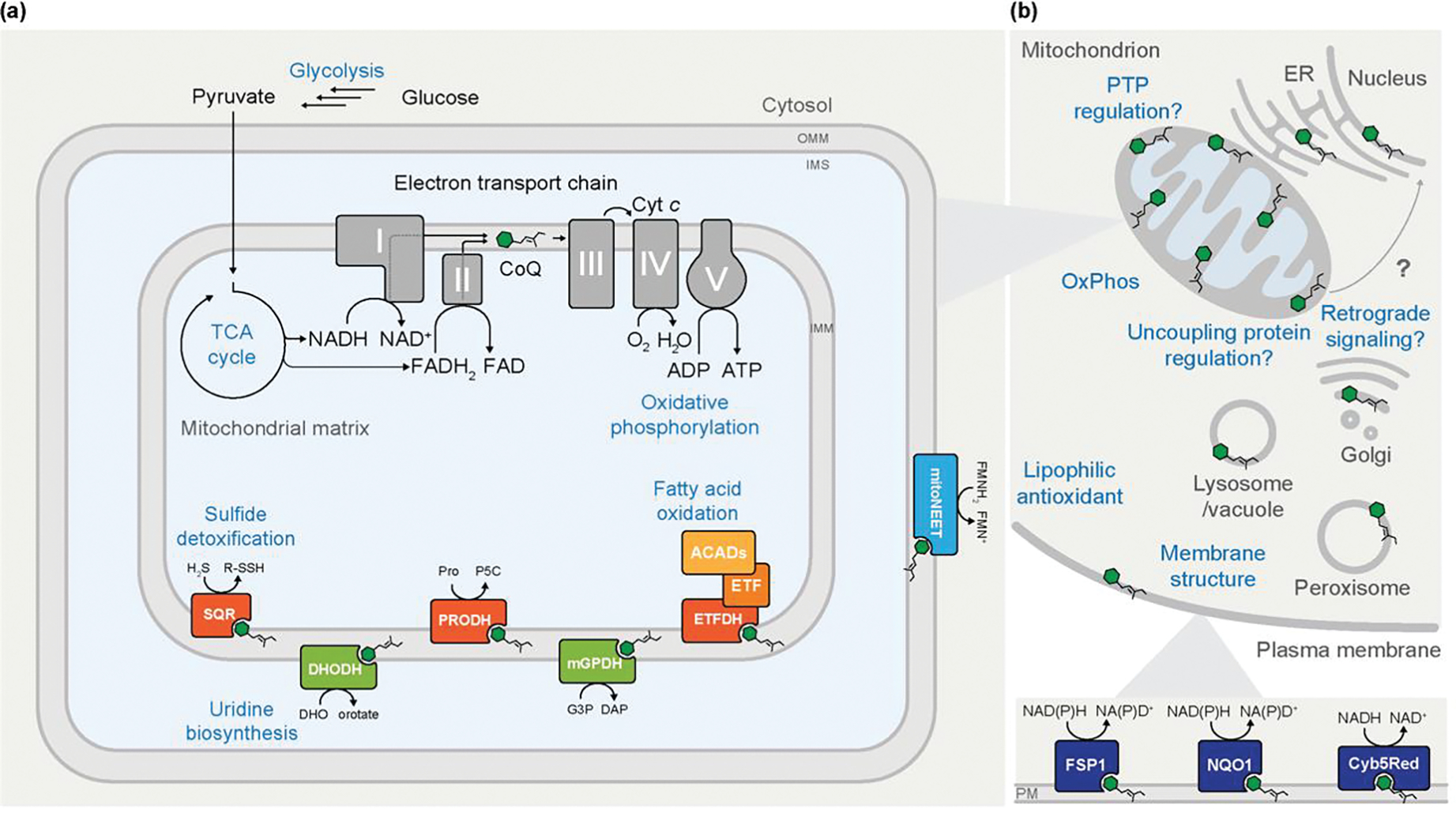Figure 1. Cellular Roles of Coenzyme Q.

(A) Although coenzyme Q (CoQ) is typically regarded for its central role in the mitochondrial electron transport chain and oxidative phosphorylation (OxPhos), it additionally acts as a cofactor for multiple mitochondrial enzymes. As part of central energy metabolism, the tricarboxylic acid (TCA) cycle provides reducing equivalents that enable the reduction of CoQ at OxPhos complexes I and II. Reduction of CoQ by enzymes involved in uridine biosynthesis, fatty acid oxidation, and sulfide detoxification, among others, provides additional routes of electron entry to complex III of the ETC, which ultimately drives ATP synthesis. (B) An overview of the widespread cellular functions of CoQ. CoQ is present in nearly all cellular membranes. Some extramitochondrial roles of CoQ are depicted, including modulating membrane structure dynamics and regulating the uncoupling protein, though many of the roles are incompletely characterized. At the plasma membrane (PM), reduced CoQH2 acts as lipophilic antioxidant where it can be reduced by various oxidoreductases to combat lipid peroxidation and oxidative damage.
